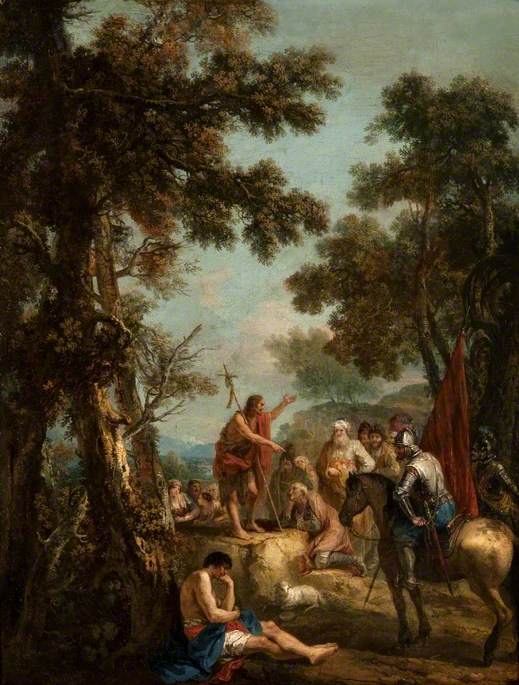(15 August 1702 – 30 December 1788)
Giacomo Francesco Zuccarelli was an Italian artist of the late Baroque or Rococo period. He is considered to be the most important landscape painter to have emerged from his adopted city of Venice during the mid-eighteenth century, and his Arcadian views became popular throughout Europe and especially in England where he resided for two extended periods. His patronage extended to the nobility, and he often collaborated with other artists such as Antonio Visentini and Bernardo Bellotto. In 1768, Zuccarelli became a founding member of the Royal Academy of Arts, and upon his final return to Italy, he was elected president of the Venetian Academy. In addition to his rural landscapes which frequently incorporated religious and classical themes, Zuccarelli created devotional pieces and on occasion did portraiture. Beside paintings, his varied output included etchings, drawings, and designs for tapestries as well as a set of Old Testament playing cards.
Despite the fame he experienced in his lifetime, Zuccarelli’s reputation declined in the early 19th century with naturalism becoming increasingly favoured in landscapes. Turner criticized him in mild terms while confessing that his figures could be beautiful, paving the way for more severe Victorian assessments. In 1959, the art historian Michael Levey offered suggestions for why Zuccarelli held such wide contemporary appeal among the English, concluding that his best work is highly decorative. More recently, since the 1990s there has been a renewed focus on Zuccarelli among Italian scholars, who have given him prominence in several books and articles, and his paintings and drawings are regularly shown in exhibitions.
